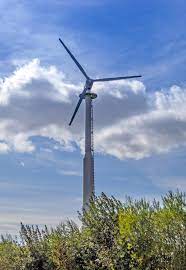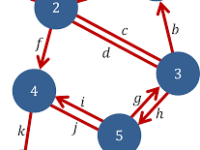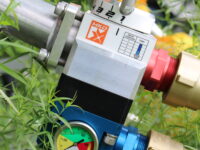For centuries, humanity has used windmills to convert wind energy into usable electricity. As the modern world faces an unprecedented climate crisis, scientists and engineers have endeavored to make windmills more efficient, and most windmills are now tall structures with massive spinning blades. Although this design structure allows for an abundance of sustainably produced energy, it has unintended negative effects on winged animal populations.
For the last decade, scientists have generally agreed that the existence of windmills directly causes both bird and bat fatalities as they consistently fly into the spinning blades, but they still debate the severity of the situation. Many point to the fact that windmills are responsible for significantly fewer winged animal deaths as compared to collisions with windows and predation by house cats, but others argue that windmills also indirectly induce death by severely obstructing winged species’ migratory paths. In recent years, scientists and engineers have been researching various ways to mitigate the harm caused by windmills through both better planning and adjusted windmill designs.
“Scientists have been researching various ways to mitigate the harm caused by windmills through both better planning and adjusted windmill designs”
The two major winged species that are most negatively affected by windmills are birds and bats. As birds of prey navigate their ecosystem for prey, they typically look down at the ground instead of where they are flying. The blades on windmills can reach speeds of up to 179 mph, easily slicing into these unaware fliers, many of which may belong to endangered species. Other birds cannot discern the location of the blades, which are nearly invisible while in motion due to the motion smear effect created by their high speeds. This effect is made worse by the fact that the blades, often painted grey or white, blend into the skyline. Migratory tree bats are also disproportionately affected by windmills, as they collide with turbines during their migration season.
When these species eventually become aware of windmills, they learn to avoid the areas where windmills exist. This avoidance behavior leads to both reduced reproduction rates and increased offspring mortality rates. Since it requires more energy to arrive at reproduction locations, these species will have less energy left over to reproduce and raise their young. Over an extended period, individuals who produce a smaller number of offspring will be more reproductively successful as they will have the energy to care for their young, and the overall population will develop the trait of producing fewer offspring. In addition to this, extensive energy expended during the avoidance process may lead to exhaustion-induced death for the animals before they even have the chance to reproduce. For all these reasons, winged species experience both individual death and general population decline as a result of windmills.
Some scientists believe a change in design might help mitigate these effects. The most ubiquitous design for windmills contains three blades spinning across a horizontal axis. This allows for maximum efficiency, relative affordability compared to other designs, and overall superiority in terms of energy production. However, there is another design that scientists believe may provide a more sustainable alternative to horizontal-axis windmills – the vertical-axis windmill. The vertical-axis windmill is not only shorter than the horizontal-axis windmill, but the fact that its blades rotate around a vertical axis means that collisions with birds are less likely. Although more research is needed to determine how efficient this design can become at producing energy before there are any talks of a full transition, a design change seems to be a promising strategy in both committing to wind energy and preserving our winged species populations.
Other research analyzes the changes that can be made to existing windmill structures to improve the survivability of the surrounding winged species. Scientists in Norway discovered that painting one blade black eliminates the motion smear effect and reduces avian fatalities by roughly 70%. Recent advancements in Artificial Intelligence (AI) have made it possible for AI to detect approaching birds and shut down windmills until the birds have safely passed. Although still too unreliable and expensive to use everywhere, this technology could develop to become a critical solution to this problem.
Despite the tangible threat that windmills pose to winged species, the other forms of energy production that windmills replace, such as fossil fuels, are undeniably more damaging to winged species populations. The existing repercussions of human-induced climate change, which will only grow worse in the future if sustainable energy is not adopted, have already interfered with both bird and bat migration patterns greater than windmill disruptions. All of that being acknowledged, many of the detrimental effects that winged species face as a result of the continued adoption of wind energy are demonstrated to be preventable while not compromising the shift from unsustainable energy.
The continued development of these technologies and designs will lead to new, successful ways to benefit both the fight against climate change and the sustainability of winged species populations, hopefully in the near future.






